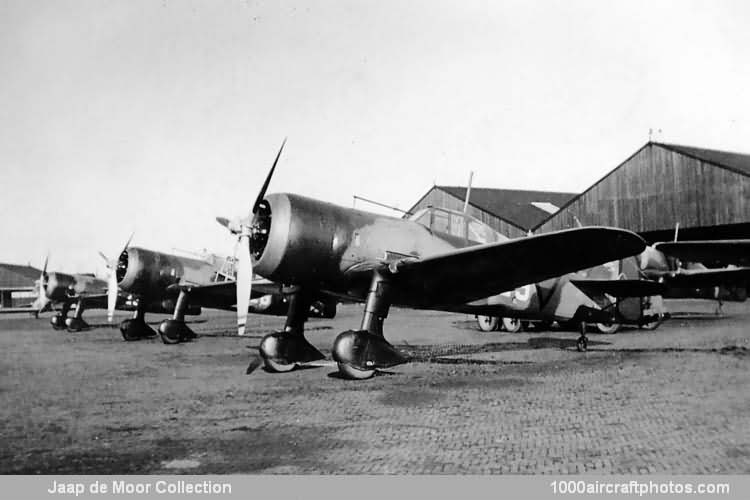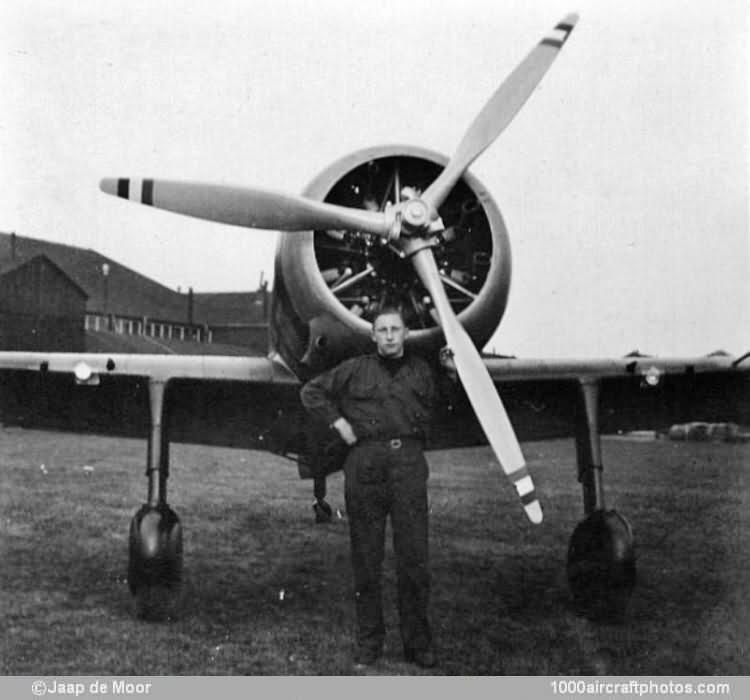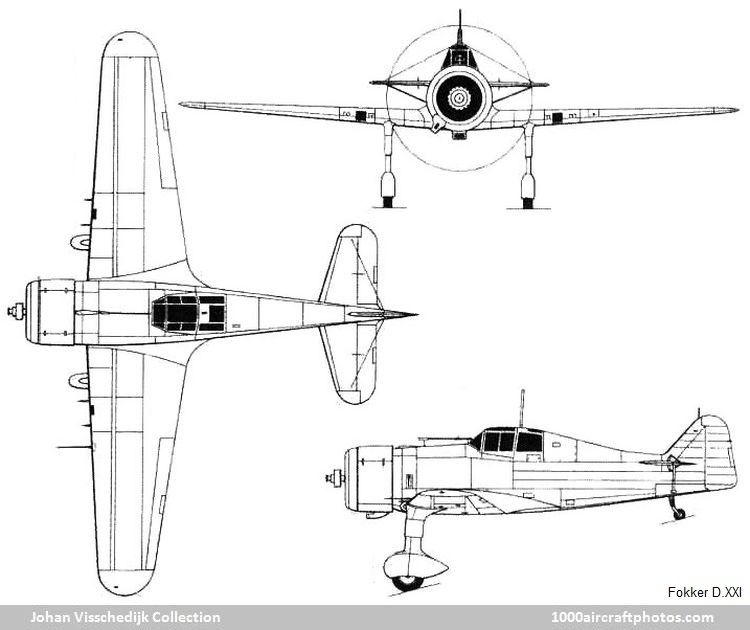09/30/2011. Remarks by Johan Visschedijk: "Designed by a team led by Dr.-Ir. Erich Schatzki and retaining traditional Fokker-type mixed construction, the D.XXI was conceived in answer to a specification formulated by the LA/KNIL (Luchtvaart Afdeling Koninklijk Nederlands Indisch Leger), the aviation element of the Royal Netherlands Indies Army, and was flown as a prototype on February 27. 1936.
In the event, the initial production order was placed by the Finnish government, which acquired a manufacturing license, a contract subsequently being issued in the Netherlands on behalf of the home-based LVA (Luchtvaartafdeling). The latter purchased 36 D.XXIs, s/n 212 to 247, powered by the 825 hp Bristol Mercury VIII nine-cylinder radial engine and armed with four wing-mounted 0.311 in (7.9 mm) FN-Browning M.36 guns.
Finland acquired seven aircraft from Fokker, with delivery flights commencing August 27, 1937, and a further 35 were license-built by Valtion, these being armed with four 0.303 in (7.7 mm) Brownings, two being fuselage mounted, and having PZL- or Tampella-built Mercury VII engines of 840 hp. Two D.XXIs were purchased by Denmark which subsequently license-built a further ten, these mounting a pair of 0.787 in (20 mm) Madsen cannon and two 0.311 in (7.9 mm) machine guns.
License manufacture was also initiated in Spain by Hispano Aviación, assembly being undertaken at the SAF-15 factory (Servicio de Aviación y Fabricación, Aviation and Manufacturing Service) at La Rabasa, Alicante. At least one D.XXI was completed and flown in Spain with a Soviet M-25 engine taken from an I-16 before the production facility was overrun by Nationalist forces. At that time, 50 sets of wings, 25 fuselages and 25 landing gears for D XXIs were discovered.
The D.XXI was offered by Fokker with various engines, including the Pratt & Whitney Twin Wasp Junior, and the basic D.XXI was further developed with this engine in Finland by Valtion. The last Finnish-built Mercury-engined D.XXI was fitted with a Finnish-designed retractable landing gear after suffering a landing accident. It was test flown on June 19. 1941, the fixed gear being restored after another landing accident a month later."


